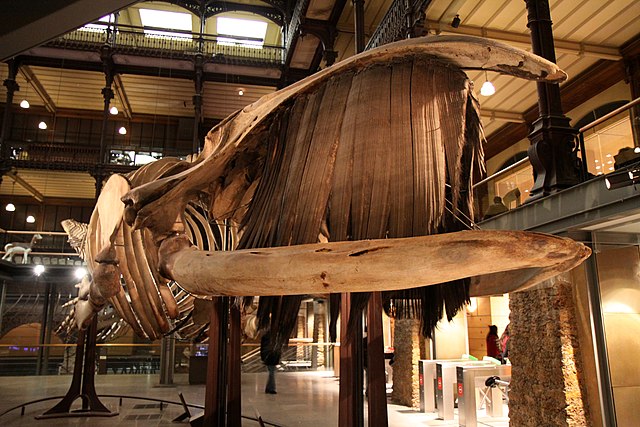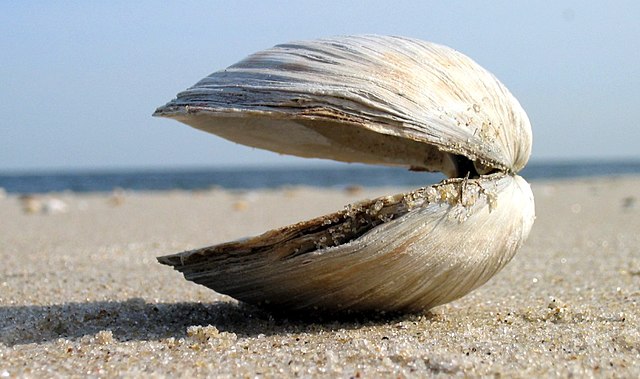Filter feeders are a sub-group of suspension feeding animals that feed by straining suspended matter and food particles from water, typically by passing the water over a specialized filtering structure. Filter feeders can be sessile, planktonic or nektonic, and some extant animals that rely on this method of feeding are clams, krill, sponges, baleen whales and many fish. Some birds, such as flamingos and certain species of duck, are also filter feeders. Filter feeders can play an important role in cleaning water, and are therefore considered ecosystem engineers. They are also important in bioaccumulation and, as a result, as indicator organisms.
Filter basket of a mysid
Mouth plates of a Baleen whale
Tube sponges attracting small reef fish
An undulating live Aurelia in the Baltic Sea showing the grid in action.
Clam is a common name for several kinds of bivalve molluscs. The word is often applied only to those that are edible and live as infauna, spending most of their lives halfway buried in the sand of the seafloor or riverbeds. Clams have two shells of equal size connected by two adductor muscles and have a powerful burrowing foot. They live in both freshwater and marine environments; in salt water they prefer to burrow down into the mud and the turbidity of the water required varies with species and location; the greatest diversity of these is in North America.
A clam shell (species Spisula solidissima) at Sandy Hook, New Jersey
Littleneck clams, small hard clams, species Mercenaria mercenaria
A clam dish
Clams simmering in a white wine sauce








